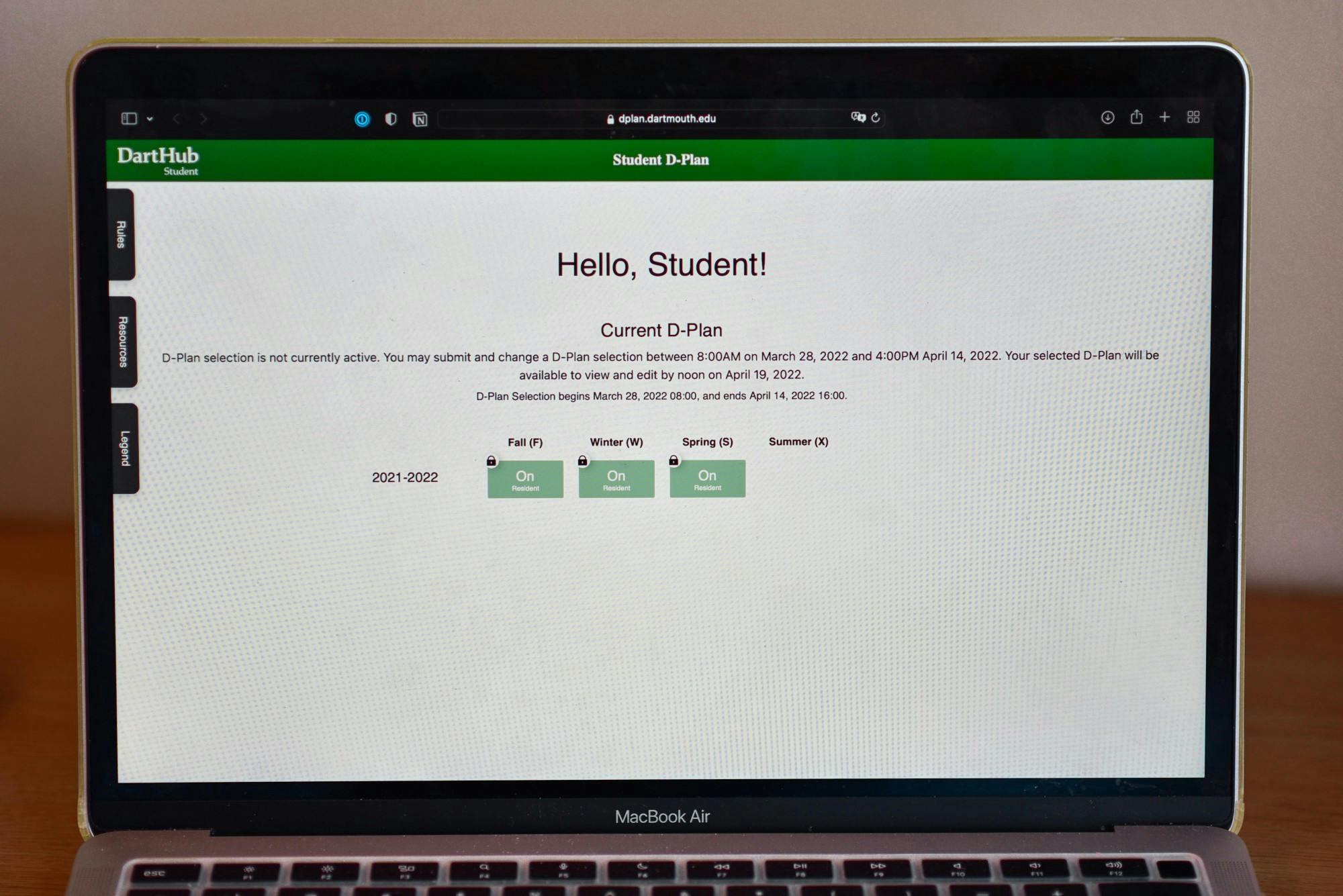This term, two new apps have been created by or with the help of students: a new D-Plan app and a Dartmouth Directory app. The D-Plan application in DartHub was created by the Registrar in partnership with the Information, Technology and Consulting office and the student-run DALI Lab, while Jordan Mann ’25 created the new iOS Dartmouth Directory app.
D-Plan App
The D-Plan interface replaces the previous “View/Edit D-Plan” and “Select D-Plan” tiles on DartHub with a single tile labeled “D-Plan,” a tool that aims to make D-plan changes easier for students, with D-Plan rules and resources included.
According to ITC director of student and academic systems Sam Cavallaro, the new D-plan interface aims to address students’ needs, as new rules for D-Plans will apply to the Class of 2024 and future classes.
“We wanted to get a fresh look at what were some of the things that [students] thought needed to be improved with the interface in general,” Cavallaro said.
ITC academic applications developer Catherine Porter, who helped with the interface’s development, wrote in an emailed statement that information about D-Plans was previously spread across two different applications and it was difficult for students to tell whether a D-plan was valid before they submit it.
Working with a team of DALI students, Cavallaro said his team realized that many D-Plan rules for international students — especially relating to their visas — were not included in the previous model, which prompted them to add all relevant information in the new interface.
“We went from maybe having to make a few rule changes to an interface that we really felt was inclusive of all students,” Cavallaro said. “What we’ve realized is that when we work with the students to help drive the solution, as well as the registrar or any other department, we can come up with a better solution.”
ITC academic applications developer William Cowen wrote in an emailed statement that he hopes the new tool’s “intuitive” design will address the challenges that many students’ making D-plan changes face and reduce “a lot of the stress” around making D-plan changes.
Cavallaro said that many people contributed to the application’s creation, which took around a year and a half to complete and involved regular communication with the Registrar and student testing. Cowen described the process of working with students as “gratifying.”
Rohan Robinson ’21, a DALI Lab student who worked on the application in the winter of 2020, said that he felt the design process was very collaborative and his team met weekly with the ITC team.
He said that in the old interface, if a student tried to put in too many terms in a row into the system, it would give an error message without telling the student what was wrong. Through talks with the Registrar, Robinson’s team was able to integrate these rules into the new interface.
“This was my first DALI project where I got to work on code that wasn't part of my CS major,” he said. “I found that the coolest thing was working on something that was going to be used in the ‘real world.’”
Cavallaro said that the next phase of the interface will give students the ability to submit D-Plan petitions within the interface itself. Porter wrote that “it will be interesting” to see the impact of the interface when students from the Class of 2025 submit their D-plan selections later this year.
“Our goal is to put all the necessary information in one place,” Porter wrote.
Registrar for academic policy and operations Eric Parsons wrote in an emailed statement that the “more user-friendly interface” has received “nothing but positive feedback.”
Dartmouth Directory App
An additional application, Dartmouth Directory, was launched on Feb. 18 by Mann. It allows Dartmouth community members to search others’ contact information, acting as a complement to the directory lookup website and online Dartmouth directory.
Mann explained that when first coming to campus as a member of the Class of 2025, he found it really “tedious” trying to get all the contacts of the people he was meeting and then get them into his phone.
After some online “hunting,” Mann said he realized he could make a mobile app out of the online Dartmouth directory. His app takes the information found on the directory website and turns it into a searchable way to add information to an iPhone contact card.
“The idea [came from] really wanting to be able to get people’s information quickly,” Mann said.
Mann noted that he completed this project in his spare time over the past two terms as a way to teach himself Apple’s programming system for iOS apps.
“I try to teach myself programming through project-based activities,” he said, adding that he likes to understand “how to make a project align with things [he hasn’t] worked with before and [to push himself.]”
He said that learning this new software was a learning curve, but at the end of the day, it just required “putting together the pieces” to learn it.
The app has been well-received, Mann said. He added that he “got a lot of value” from developing the app.
“At the end of the day, even if it’s hated, I built it for myself. I get a lot of value out of it,” Mann said. “Obviously I want to help the most people that I can with my work, but ultimately, I’ve got the value that doing this works for at least one person.”
Since creating the app, Mann has begun working as a software developer for DALI lab.
“It’s very cool to see the willingness of people to build stuff at Dartmouth,” Mann said. “I'm excited to independently, and with other people, be a part of that process.”




